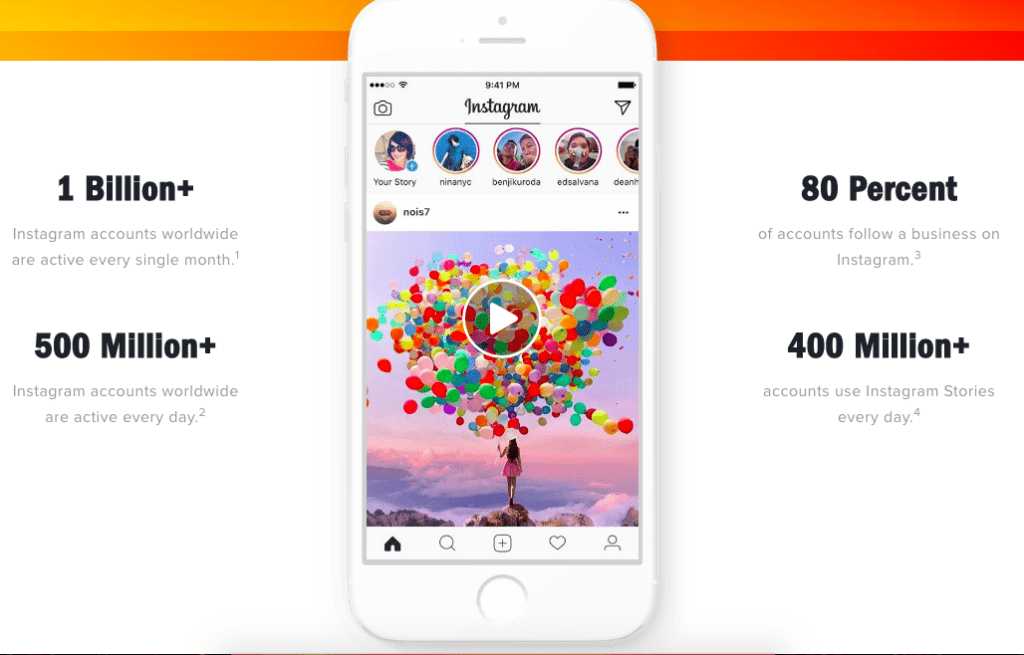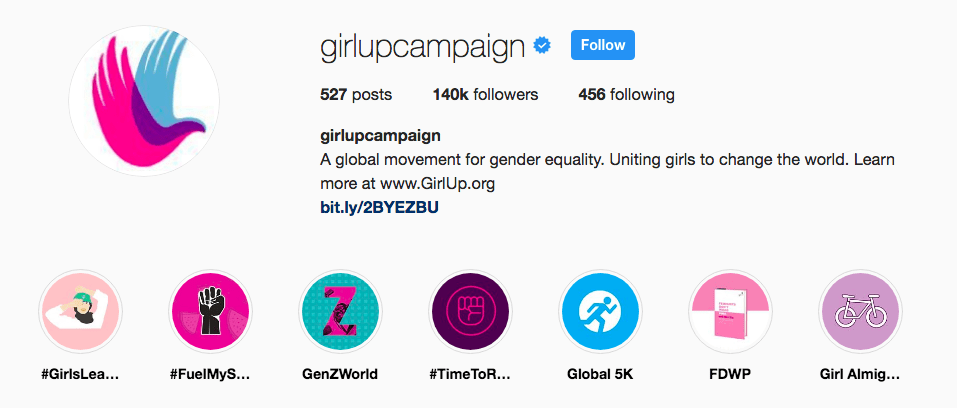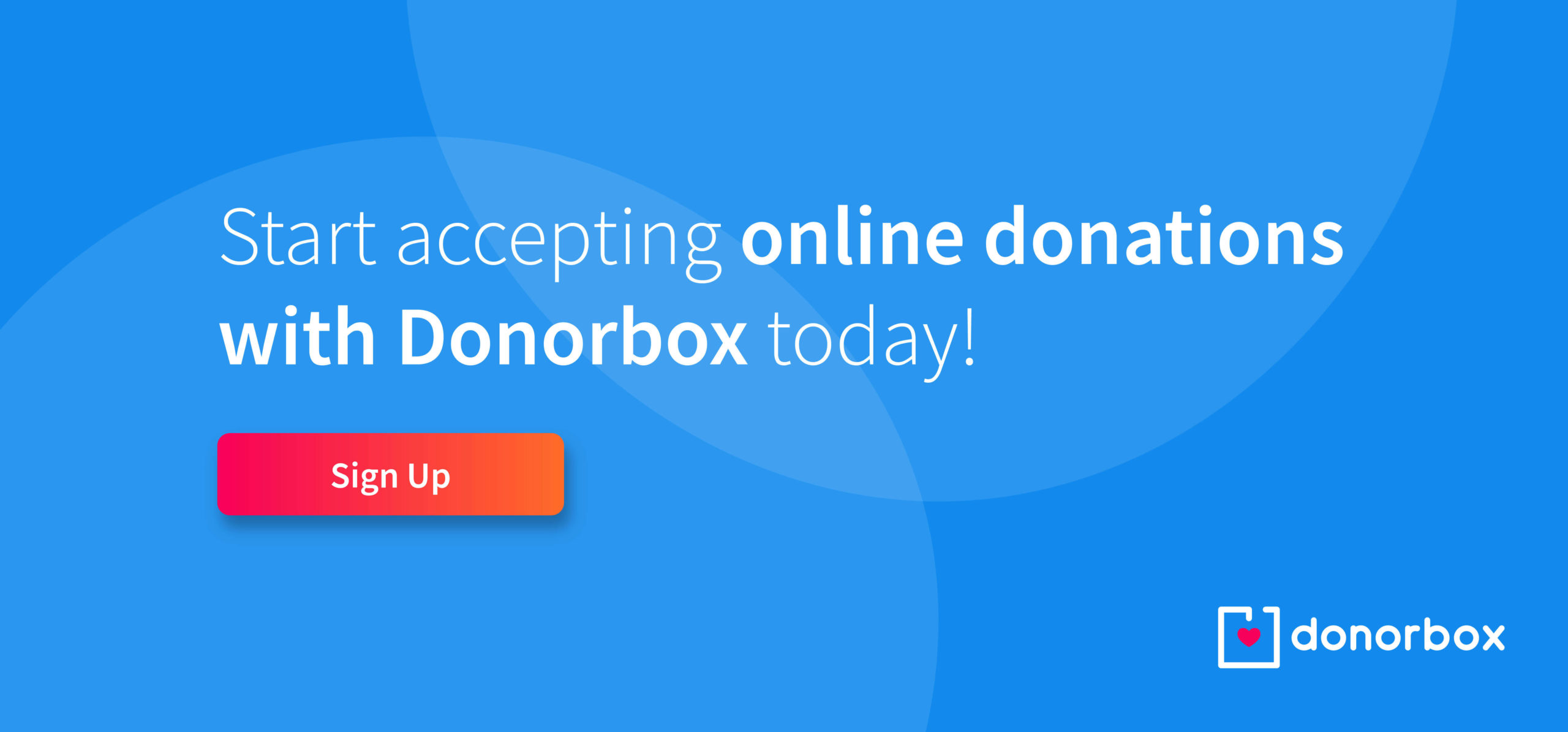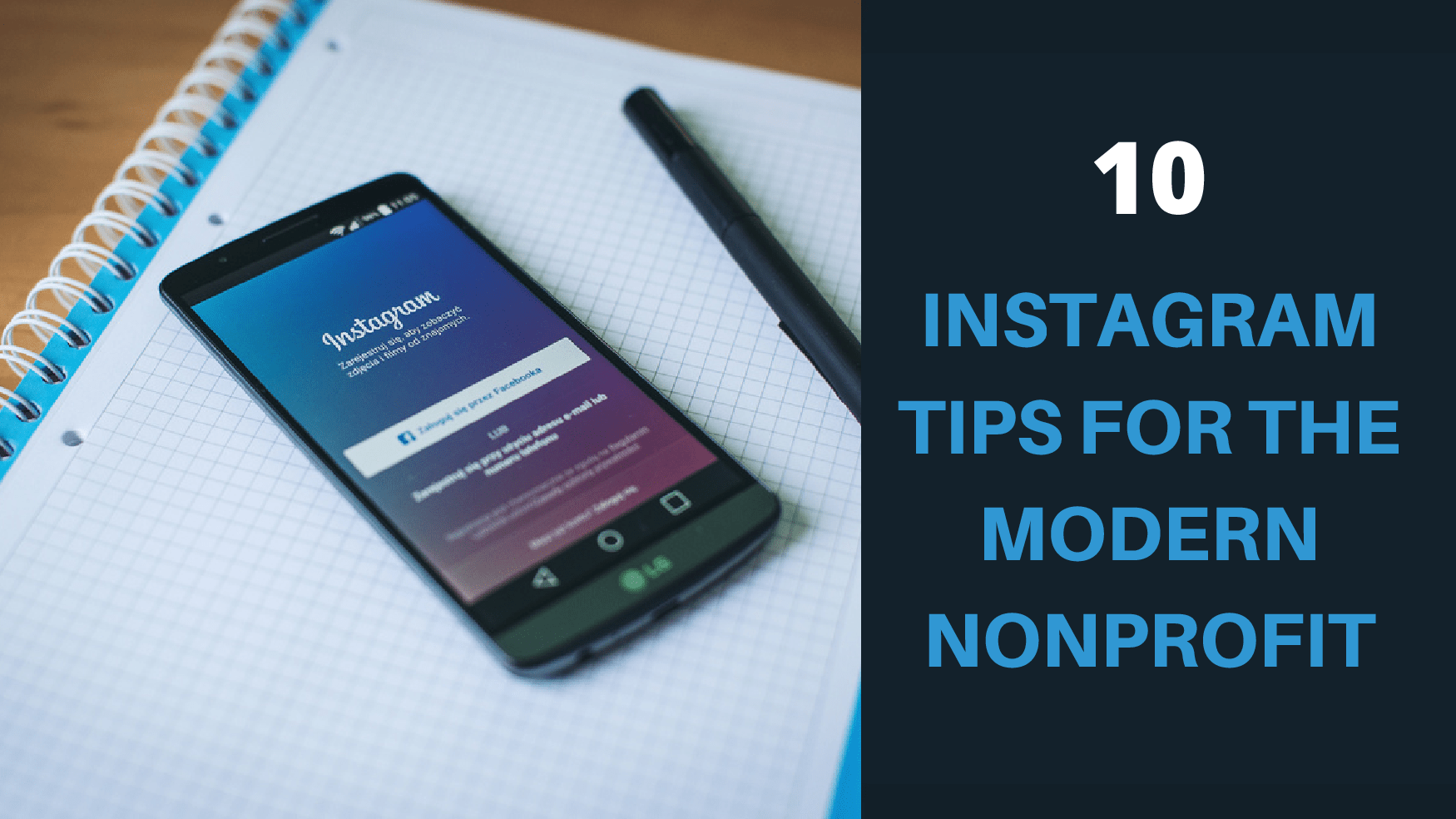Instagram is, without a doubt, a modern marketing powerhouse. As per the latest update in 2021, Instagram has over 1.074 billion users. Among the major social networks, only Facebook and YouTube have more people logging in.
The platform is growing fast. With regards to business growth, an estimated 75% of US businesses use Instagram, and over 81% of people use Instagram to help research products and services.
Very importantly, Instagram has a very high user interaction rate. Instagram has an average interaction rate of 1.22 percent. That is four times more interactions on Instagram compared to Facebook.
Why Should Nonprofits Use Instagram?
With all of this in mind, it’s easy to see why a nonprofit should use Instagram to grow. Using Instagram offers a number of advantages, including:
1. High User Engagement
As previously mentioned, Instagram has a very high user interaction rate. Instagrammers frequently check the site, often several times a day, and engage with posts at a much higher rate than other social networks. This means that, if you use Instagram right – you could be tapping into a network of active, engaged, and passionate supporters and donors.
2. Younger Audience
Instagram’s audience is predominantly young, female, and relatively global. This means that you could be reaching all of your younger donors and supporters in one place. This is especially important if Gen Y and Z are your target audience.
3. Very Visual
Instagram is all about photos and videos. Visual content is more effective in engaging users and eliciting emotions and response, especially when compared to written content. Visual content also strengthens your storytelling. Nonprofit storytelling, as we know, is an incredibly powerful tool for branding and fundraising – among other things.
4. Quick and/or Real-Time
Instagram is a change from the traditional graphs, infographics, and lengthy content featured in ‘normal’ marketing materials such as your blog or your annual report. Users enjoy quick updates that allow them to see the innermost workings of your nonprofit. You can also go the extra mile and post ‘real time’ which makes users feel even more connected.

These are only some of the many benefits of using Instagram and what the network can bring to your nonprofit.
Top 10 Tips and Best Practices for Modern Nonprofits:
- Sign Up for Instagram Business Tools
- Make Your Profile Stand Out
- Have an Instagram Strategy
- Decide on Your Feed
- Write Compelling Captions
- Post Instagram Stories
- Utilize the Full Potential of Instagram Stories
- Don’t Forget About Hashtags
- Engage With Your Followers
- Use CTAs
1. Sign Up for Instagram Business Tools
Before you do anything, sign up for Instagram Business Tools. It’s free, and it provides you with several useful tools that you don’t get with a personal account.
For example, you can get real-time metrics on how your stories and promoted posts perform throughout the day, as well as insights into your followers and how they interact with your posts and stories.
You can also add your hours and a contact button.
Here’s how to set up Instagram for your nonprofit:
- In settings, find your account and tap Switch to Professional Account.
- Pick a category that best describes your business (Nonprofit Organization), then select Business.
- You’re all good to go, you’ve got an Instagram business account. Now you can complete your profile by adding relevant details.
Read this guide by Instagram on how to get started.

2. Make Your Profile Stand Out
For your profile picture, choose something visually appealing and something that represents your organization. Make sure it’s easily recognizable both from mobile phones and personal computers.
Make your description attention-grabbing, representative of your tone and brand feel, and interesting.
Always add a link to your bio. This link should always lead to your current fundraising campaign – or your website if there’s no campaign going on at the moment. You can refer to this link later on when you’re posting images or Stories.

3. Have an Instagram Strategy
What is your nonprofit organization hoping to accomplish? The answer to this question should drive the rest of the process.
How will your Instagram account fit into the rest of your marketing strategy, and how will it fit with your other social media accounts like Facebook or YouTube?
Decide who will run the account, whether that be one person or several. Users can toggle between business and personal accounts without logging out.
Finally, set specific and measurable goals for your Instagram account (e.g. a specific number of followers or a specific click-through rate).

4. Decide on Your Feed
Instagram is a highly visual platform, and users are more and more demanding when it comes to the quality of the images posted.
In addition to making sure you’re posting high-quality and engaging images, it’s been shown that feeds that are more consistent and ‘specific’ do better than profiles that feature a little bit of everything.
Pro Tip: If you feel like you never have enough content to share, try using a tool like MemoryFox to collect content directly from your frontline volunteers, mission beneficiaries and donors.
Edit your photos in a similar fashion using either VSCO or Lightroom presets (if you’re a bit more advanced) or simply use the same Instagram filter on all of your photos to make them look aligned and to portray the same brand feel.
This doesn’t mean that you shouldn’t mix up the type of content you post – everything from the CEO’s inspirational quotes to photos of good nonprofit work being done.
And don’t forget to ensure your posts are consistent. That means: post regularly, and around the same time every day.
Here are some tools that you can use to take your Instagram posts up a notch:
- Snapseed
- VSCO
- Canva
- Instaquote
Pro tip: If you struggle to post consistently – try Buffer, Hootsuite, or Sprout Social. With those tools, you can schedule Instagram posts ahead of time.

5. Write Compelling Captions
Although Instagram is all about visual content, captions are increasingly important. Don’t let your Instagram captions become an afterthought!
Why are captions becoming more important than ever? The new Instagram algorithm tends to favor posts that get a lot of engagement. When a post receives a ton of likes, comments, and shares, this signals to Instagram that it’s high-quality content that other users might want to see too. And captions are key to user engagement.
There’s no “golden rule” for writing amazing Instagram captions. It’s generally a lot of trial and error until you find the captions that your audience responds best to. Instagram captions can range anywhere from short and sweet to longer, in-depth stories (Instagram captions can be as long as 2200 characters).
Here are some quick tips:
- Ask your followers to take action by clicking the link in your bio, by donating, answering a question, tagging a friend, using your branded hashtag and so much more (don’t do this in every post though).
- Start your captions with important details. After 3-4 lines of text, Instagram captions are truncated (shortened).
- Mention other users and use relevant hashtags (specific to your audience and their interests).
Instagram captions deserve a blog post of their own – which we will be getting to soon on our Donorbox Nonprofit Blog!

6. Post Instagram Stories
Every day, over 500 million people use Instagram Stories. Instagram Stories is Instagram’s Snapchat-like feature that creates photo and video sequences that disappear 24 hours after being posted. This type of content is also known as ephemeral content.
Ephemeral content has become extremely popular since audiences have become saturated with overly polished content. People increasingly crave authenticity. A global study found that 86% of consumers say authenticity is key when deciding which organizations to like and support.
Use Instagram Stories to:
– update your followers;
– share ‘behind-the-scenes’;
– hold contests;
– shout out to followers;
And so much more.
You should post Instagram stories daily, ideally a couple of times per day, to stay on top of your followers’ minds.
Here’s a detailed guide on how to use Instagram Stories.
Here’s how CARE used Instagram stories to tell compelling stories of seven women. Their campaign was titled “Stories from the Other Side of the World,” and it follows seven women over seven days, their streams littered with the tropes of Stories narrative—”end of the day #exhausted,” #nevergiveup, “family breakfast,” “back to school.”

7. Utilize the Full Potential of Instagram Stories
In addition to posting Instagram stories, it’s advisable to utilize the full potential of Instagram Stories. This includes:
- adding hashtags to your Stories;
- adding location stickers to your Stories;
- using Stickers;
- using Polls (A/B and Slider);
- adding links;
- using GIFs;
- adding your Instagram posts to your Stories;
- reposting other user’s Stories in which you’re mentioned;
- adding music to your Stories;
- using Boomerang;
And don’t forget about Instagram Story Highlights. Story highlights are collections of images and videos that can be ‘pinned’ to your Instagram profile indefinitely. In contrast to an Instagram story that expires after 24 hours, these highlights can be used to broadcast your most important information, updates, campaigns, etc.
Instagram Stories have a lot to offer as a feature. Mix it up regularly to keep your supporters engaged and interested.

8. Don’t Forget About Hashtags
Like on Twitter, hashtags are essential for your nonprofit’s success on Instagram. Hashtags are essentially keywords that operate as a way to be found when your target audience searches for something. They are a great way to categorize your content on Instagram and help it get discovered.
Instagram posts with at least one hashtag get 12.6 percent more engagement than posts without one.
Using hashtags is crucial if you want to be discovered and grow in the number of followers and engagement.
Here are some top tips for using hashtags:
– Create designated hashtags for different campaigns and encourage users to use them in their posts too.
– When it comes to the number of hashtags, the debate is still ongoing. You can use up to 30 hashtags per Instagram post. Some say this looks spammy but studies show that anything less than 11 will result in little engagement.
– Use a mix of unpopular and popular hashtags.
– Regularly engage with hashtags that you yourself use by commenting on others’ posts.
– Save your hashtags into a note on your mobile device, so you don’t have to type them all the time.
You can also utilize hashtags to crowdsource images, raise cause awareness and increase donations.

9. Engage With Your Followers
Regardless of the quality of your photos or the creativity behind your Instagram Stories, your Instagram won’t grow and you won’t be able to use it to its full potential unless you engage with your followers.
Direct communication with followers is the best way to engage with them:
– Promptly respond to comments on all of your photos and videos.
– Tag other accounts in your posts (both in photos and in captions).
– Use Instagram Stories features like Polls and Questions to gather insights from your followers and answer their questions.
– Directly thank your followers for their donations and support.
– Post consistently.
– Organize live videos.
– Create a hashtag for your campaign (try to keep it short and make sure it includes your nonprofits’ name), then ask your followers to take pictures using your branded hashtags and follow your instructions on what images you want.
Try to frequently visit your follower’s accounts, and like and comment on their photos. This will make your supporters feel valued and recognized.
Another benefit of engaging with your followers, especially through hashtags, is obtaining user-generated content (UGC). You can post your supporters’ videos, photos, and more on your profile. This increases trust and credibility amongst your other followers. People trust people more than they trust brands, even if they’re nonprofit.

10. Use CTAs
CTAs are essential if you want to convert your social media presence into active forms of support (e.g. volunteering, donations, or campaign support).
As previously mentioned, it is not possible to put hyperlinks in Instagram captions, however, you can definitely do it in your Instagram bio. Have a good amount of your posts – some suggest all – include a CTA (Call To Action). Invite followers to visit your nonprofit’s blog, sign up to volunteer for fundraising, or simply make a donation.
Don’t forget to do the occasional A/B testing to determine what keyword phrasing and links are getting results.
Pro tip: Consider using Instagram ads. Instagram ads look almost like regular photos in a user’s feed. Since Instagram is owned by Facebook, you can run Instagram ads in the same place as your Facebook ads. Go through your Facebook ad manager and check out all the ways you can cross-promote on both platforms.

Conclusion
These are some of the most essential Instagram tips for your nonprofit. Don’t forget to keep up with your posting, as well as with tracking post times to discover which days and times reach most of your audience. Utilize Instagram Insights to obtain more information about the ways in which users interact with your content.
Instagram has opened up many avenues for nonprofits: from allowing donors to see directly into the lives of beneficiaries, enabling quick and simple fundraising, to being able to easily broadcast from remote and dangerous places.
When used thoughtfully and strategically, Instagram can be a great way to reach and engage potential donors, volunteers, and advocates for your nonprofit’s cause.
If you are not an avid social media user, the process might seem confusing or daunting. However, as with almost everything else, you can learn Instagram. It is very likely to be worth it.
Read more about other social media trends here.















